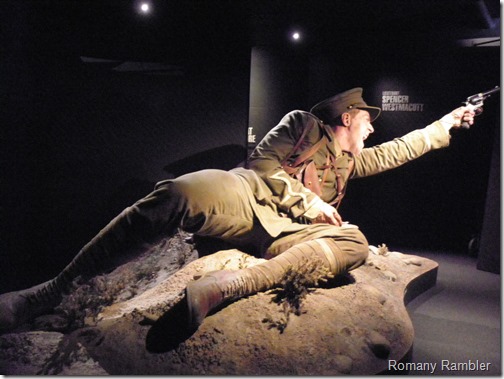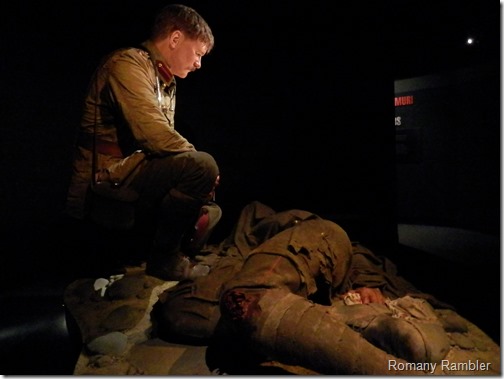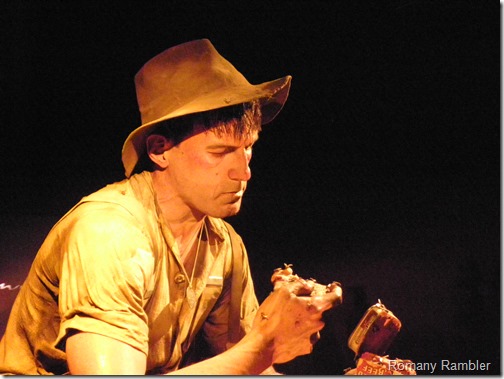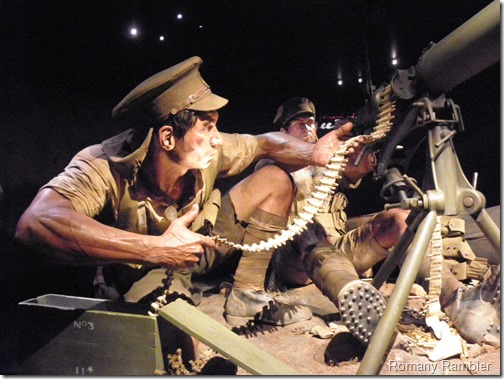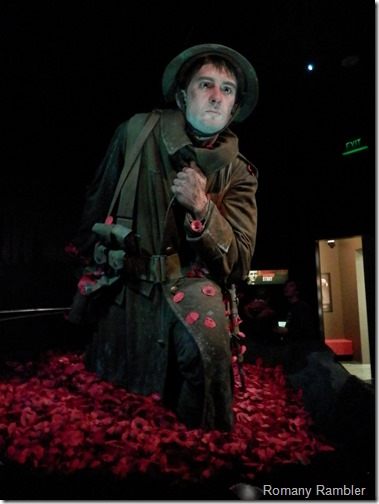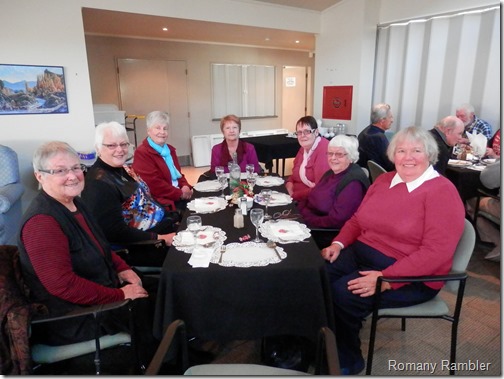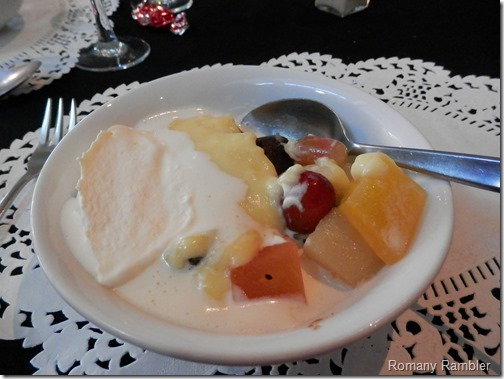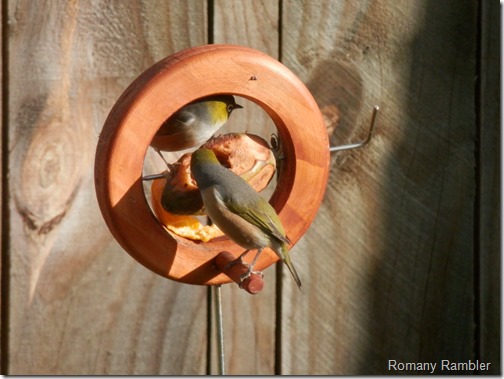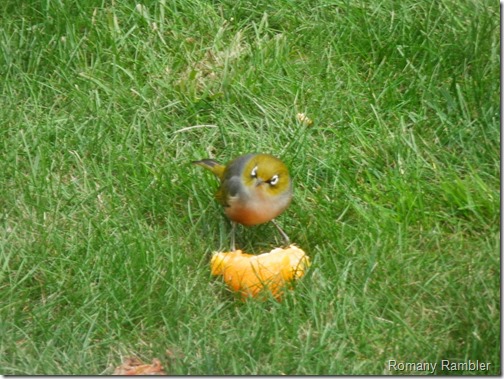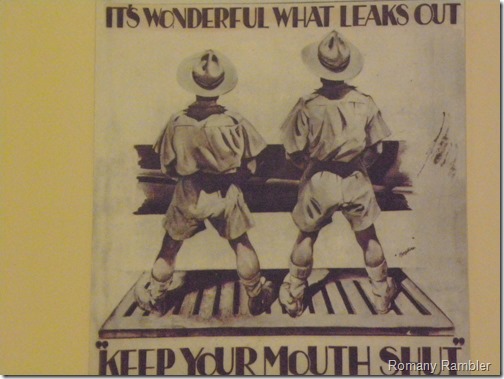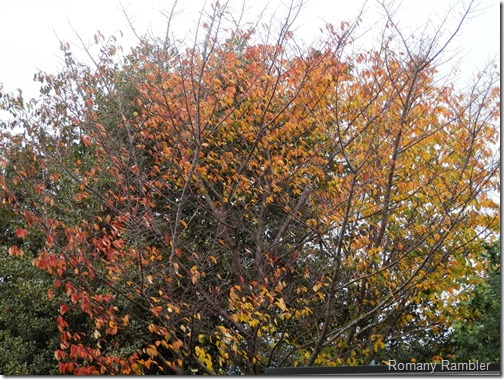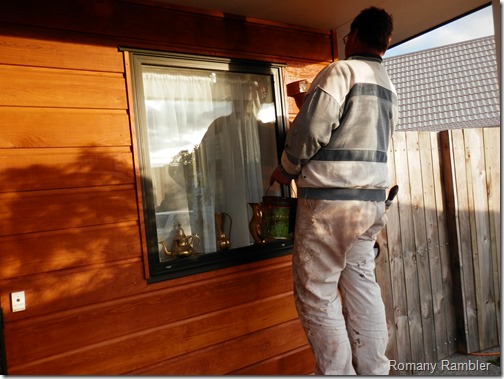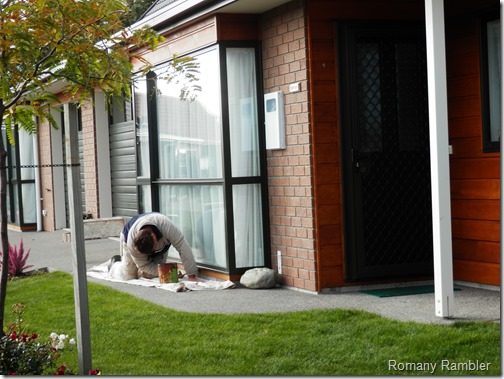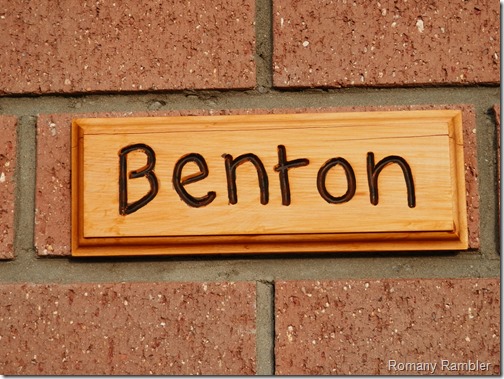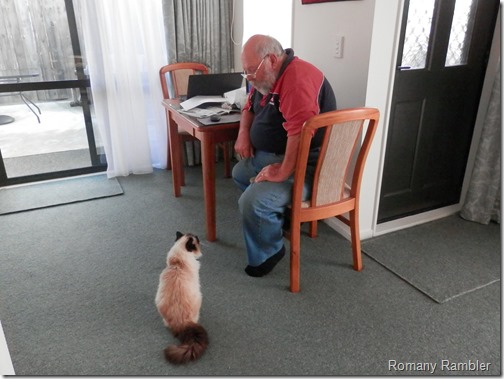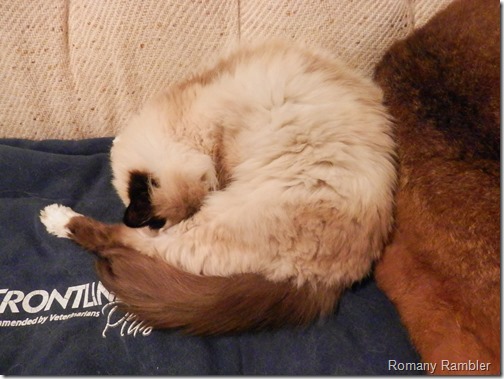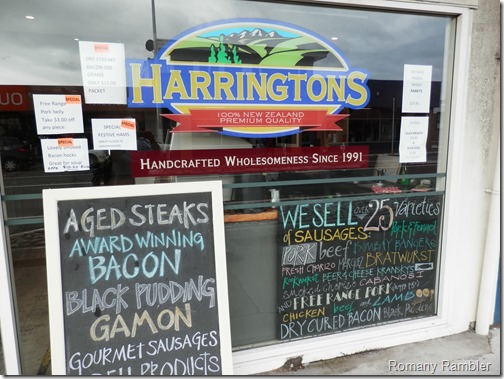Scotts Ferry is a small sleepy place these days. We took a drive up there to check out the Motor Camp – we are always looking for different places to stay at for future Caravan Club rallies. The camp is reasonably small, with very basic facilities, but will be fine for a summer rally.
Scotts Ferry was a place in big trouble just over ten years ago with the February 2004 floods. The Rangitikei River breached badly at Scotts Ferry. Police officer and Fire Chief Bruce Symons led the evacuation, but by early afternoon the flooding was too severe to return to Bulls by the main road. Mr Symons and his team had to cut a road over farmland, linking up with the gravel Forest Rd. But high winds brought trees down which had to be cut away as the population of Scotts Ferry wormed its way to safety in convoy. In the end, the water at Scotts Ferry reached the eves of houses. The water took weeks, and in some streets, months, to pump out. Eventually homes were repaired, and built with higher foundations for protection in case of further flooding. The residents call themselves the “Inn Village” these days, with a lot of homes sporting signs such as Amble Inn, Breeze Inn, and Cocktail Inn, even Les Be Inn, (I had to explain that one to Robin!)
Winter has brought yet another flood recently, and although there was still some water lying around, it was nowhere like the previous “Big One”. The amount of mud still around the bridge into the village shows just how high the water reached.
The road to the beach ended here, the sea is away in the distance but there was no way we could get any closer. “If we had the 4WD we could”, muttered Robin.
And in case you were wondering, there was in fact a ferry operating in this area. Thomas Scott, his wife Annie and young child emigrated from Scotland as assisted immigrants in 1841 aboard the Olympus. The child died on the voyage but seven more children were born in New Zealand. Thomas operated Scott's Ferry from 1850 to 1908, near the mouth of the Rangitikei River, transporting horses, cattle, sheep, coaches, produce and passengers. He and his wife Anne also managed the general store and hotel associated with the ferry. Until the opening of inland coach and rail routes, Scott's Ferry was situated on the only route between Wellington and Wanganui. The hospitality and food at Scott's Ferry was renowned, thanks to Annie Scott's efforts.
The ferry was purchased by the Featherston family in 1908 and was moved to the Wanganui River where it carried stock and produce until 1975. After laying derelict on the river bank for the next 12 years, the ferry was salvaged and returned to the area where it first operated 140 years ago, in honour of all the early pioneers.
We stopped at another historic site on the way back to SH1. This was previously the main settlement of the Ngati Apa people of Parewanui. There were twelve homes here, a meeting house and a great dining room with a large steam cooker and a bakers oven. In the 1920s many people moved to Ratana, taking the meeting house and some of the other communal buildings, where they are still in use today. By the 1930s few people remained, and the last derelict house was pulled down in the 1960s. Only the bakers oven remains on this site.
Our tummies were telling us it was time for lunch, so we called in to Woolshed Cafe for lunch. Come inside, the sign implored, the fire is on, and so is the soup! The cafe was warm and inviting, and we both had a tasty lunch, fish pie for her, and pizza for him, with coffees to follow. What could be nicer on a cold wintry day. The interior was in fact decorated like a wool shed, with a timber wool press tucked away in a corner, and saddles and bridles hanging from the rafters.
Traffic came to a standstill on our way home, as a herd of cows crossed the main road. This was a common sight in earlier years but such happenings are managed quite differently these days, with several cars sporting signs warning of stock on the road, and plenty of staff involved to get the cows safely across the busy highway.

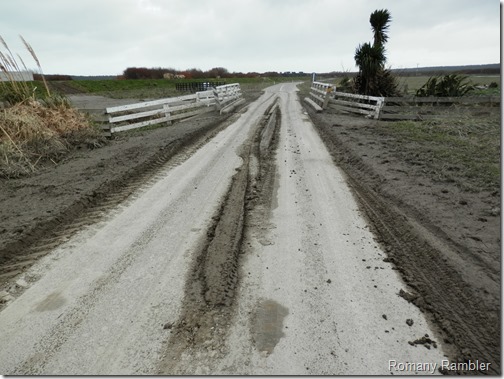

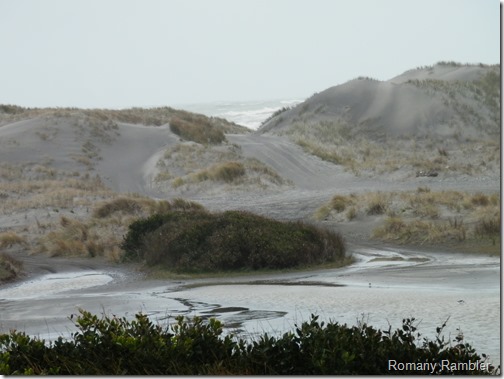


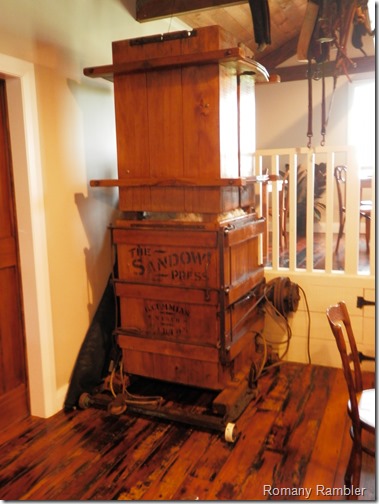

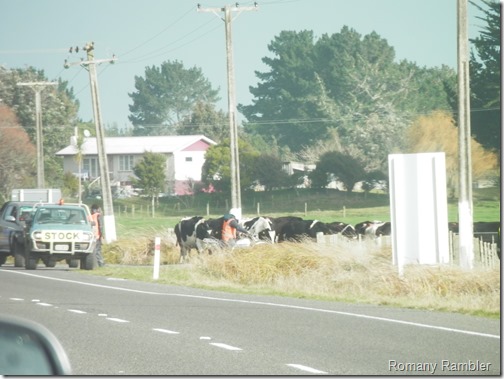
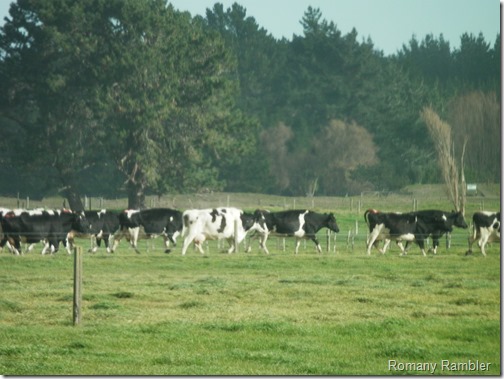
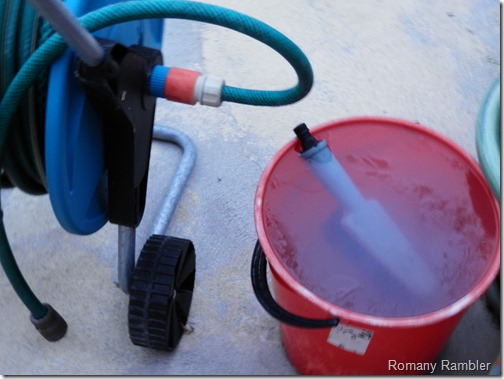
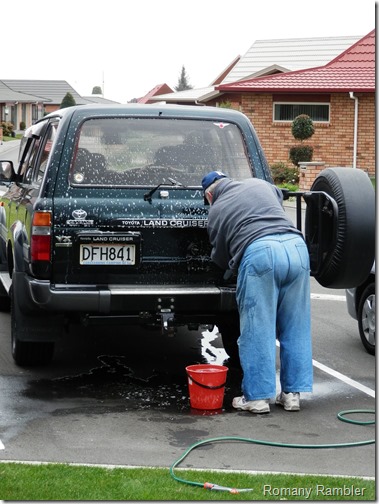
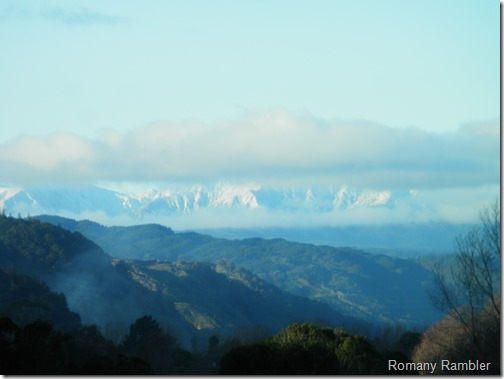
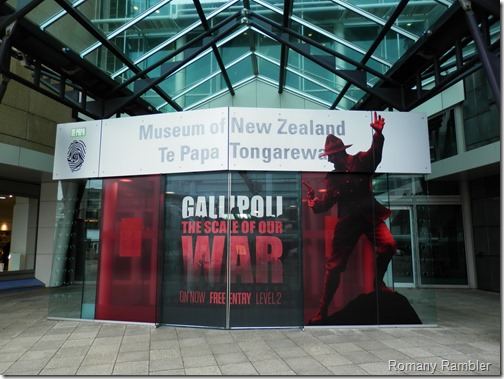
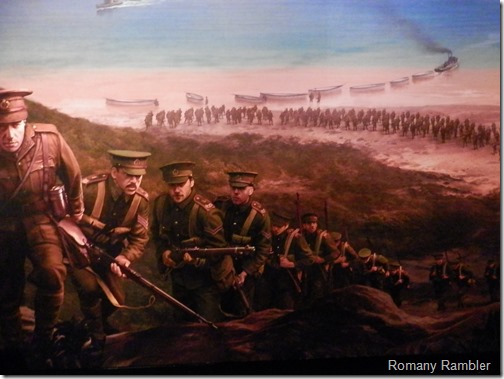 Landing on the beach
Landing on the beach